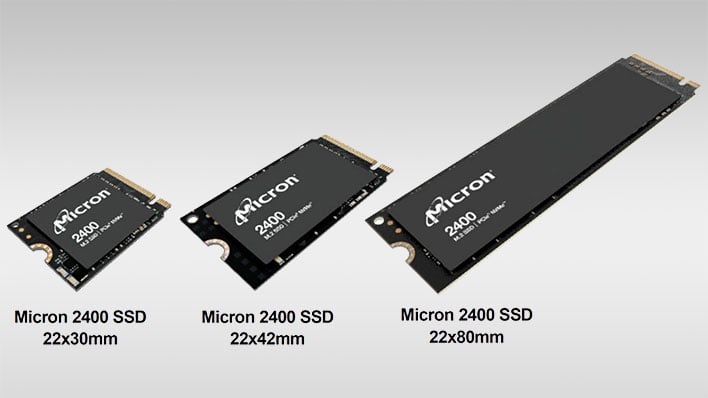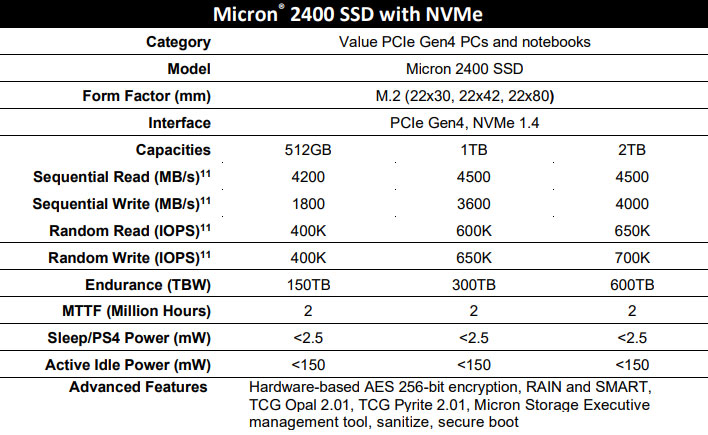Micron Ships First 176-Layer QLC NAND SSD And It's The World's Tiniest 2TB NVMe Drive

You might own a 2TB solid state drive (SSD) with an NVMe interface, but not one as tiny as Micron's new 2400 model in the 22x30mm (M.2 2230) form factor. It is the smallest 2TB NVMe SSD ever made, and it is the direct result of Micron having begun volume shipments of the industry's first 176-layer quad-level cell (QLC) NAND flash memory.
The minuscule M.2 2230 form factor shrinks the required space by a generous 63 percent compared to a standard 22x80mm (M.2 2280) SSD, the latter of which is likely what you have installed in your desktop PC or laptop (provided you're rocking an M.2 SSD, of course). Micron's 2400 SSD is also available in 2280 form, as well as 22x42mm (M.2 2242), though it's the 2230 version that will enable shoving large amounts of storage into increasing smaller spaces.
The other upshot is the potential for more affordable storage. Generally speaking, TLC NAND offers faster speeds and more endurance compared to QLC, but the latter can help deliver more capacity at cheaper price points. That's because it packs four bit layers per cell, making it a much denser solution.
"Micron’s 2400 SSD builds upon our 176-layer NAND industry leadership to drive the transition to QLC-based storage for the client market," said Jeremy Werner, corporate vice president and general manager of Micron’s Storage Business Unit. "Furthering our market leadership, we expect the new 2400 PCIe Gen4 SSD will significantly accelerate the adoption of QLC in client devices as it enables broader design options and more affordable capacity."

Source: Micron
While QLC may not be the fastest, Micron's 2400 series is anything but slow. Regardless of the form factor, the 2TB model is rated to deliver up to 4,500MB/s of sequential read performance and up to 4,000MB/s of sequential write performance. Random read and write IOPS check in at 650,000 and 700,000, respectively, with an endurance rating of 600 TBW (terabytes written).
Micron points out that its 176-layer QLC NAND enables 33 percent higher I/O speed and 24 percent lower read latency than its previous generation solution. Furthermore, it's replacement-gate architecture is the only mass production QLC flash storage that combines charge trap with a CMOS-under-array design, the company says. Micron credits traits with driving adoption of QLC SSDs within the client PC market, which it says will triple by 2023 for a 35 percent share of the market, and hit 80 percent in 2025.
"The Micron 2400 SSD delivers industry-leading storage density in a mainstream, value NVMe SSD to enable flexible OEM solution design and provide an uncompromising user experience," Micron says.
It remains to be seen what constitutes "value" but it's nice to see Micron pushing bigger capacities to the budget market, and at these kinds of speeds.

